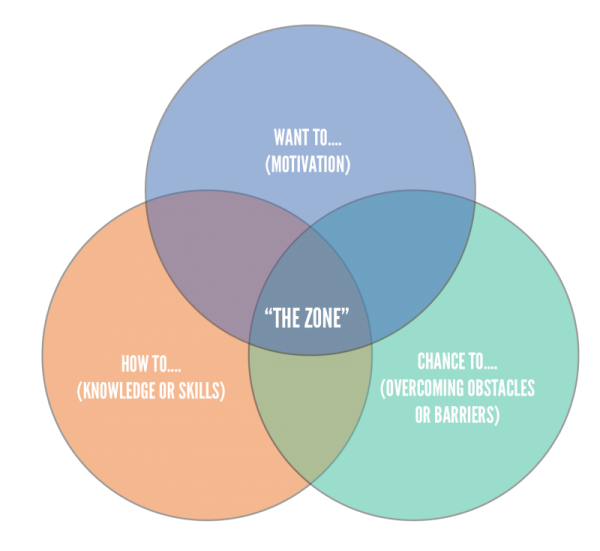Anyone who manages a team can struggle with communication and that’s because we’re dealing with people. And people have different personalities and experiences that shape and make them react in different ways to certain messages.
As a leader, how can you communicate in a clear, engaging and effective way when you’re as busy as everybody else? Never fear, communication is a skill that can be taught. Here are five quick tips to help you improve your communication skills and get your team to understand your message.
1. Select the “right audience”
Choosing who you ask to do a task is critical. It may sound simple, but during a busy day it can be so easy to speak to the person who’s available, rather than the best person for the job. Failure to take this step may leave a staff member wondering, “Why on Earth would he/she ask me that?” or worse – the staff member might feel you don’t have any idea of their role or care what other priorities they have. If you select the right person to task the job to, you’ll likely get it done right the first time and not hurt anyone’s feelings in the process.
2. Meet them “where they are”
Successfully shifting the feelings, thoughts and behaviour of your team needs to start with a thorough understanding of what they are currently feeling, thinking and doing. Only then can you connect with relevance to the audience. Full engagement with your team requires a message to have a strong What’s in it for me? (WIIFM) slant.
This can be as simple as:
– Higher client satisfaction,
– Less wasted time through rework, or
– Money saved that can be reinvested elsewhere in the business.
Whatever it is, it must be presented in a way that’s relevant to the audience. A compelling WIIFM might be all you need to obtain the change. Failure to find one could see your request forgotten or pushed down the priority list, which would require follow-up and more work to get the team to take action.
3. Understand the “gap”
If you’re communicating some kind of change happening in the workplace you should approach this by understanding the gap. The gap between the current and required actions of your team will help to decide how you should communicate the change. A small shift, easily accepted, would require a different communication style from a larger one that may be resisted. For example, if the aim is to support a meaningful change, our communication should reflect that aim.
By using our physiology, our voice and our tone we can create excitement, disturbance and concern. Any of these may be appropriate for the change you wish to promote. For example, let’s assume that a major project is at risk of not being delivered on time by a valuable team member (John).
Avoiding the conversation through fear of upsetting John will likely result in an even nastier conversation as the deadline approaches. Even worse, you may end up doing the work yourself and harbouring resentment towards John. A resentful tone in your voice will have John stewing on how he is being treated.
Instead, a well-timed and direct conversation with John is a better approach. Using a serious and motivational tone you could express three things;
- A reminder of the importance of the project to everyone,
- Disappointment in the progress achieved, AND
- Your confidence in John’s capability to reprioritise and get things back on track.
As a result, John will feel both empowerment and accountability. He will be thinking about what he can do to get things back on track rather than how he was treated.
4. Design you message around the “real point”
It’s worth asking why you need to communicate at all. Is it to shift priority, provide information, overcome a barrier, or something else? In moving a team from their present behaviour to desired behaviour, the following model may be helpful.
What’s stopping the change now? Is it:
- Motivation – in which case the communication should focus on the WIIFM (the “why”).
- Knowledge – in which case the communication should focus on skills or knowledge (the “what”).
- Obstacles or Barriers – in which case the communication should focus on what process changes need to be made to support the desired outcome (the “how”).
5. Be clear about “empowerment and accountability”
Assigning responsibility or accountability for an outcome must be matched with equal empowerment and authority. If this can’t be done, then this is not something that can be delegated. You will be frustrated by a lack of progress or constant follow-up requests for clarity. By contrast, getting this right will not only get the desired outcome, but also send strong messages of trust and ownership to your team. Be clear with them about what you expect, where their authority lies and when/if you need to hear back on this matter again. Eg. Don’t give a team member the responsibility to produce an internal newsletter without giving them the budget to hire the resources necessary to complete the job – writers, graphic designers, software tools and coders!
Final thoughts
All leaders take time to learn the best communication style for their team. By using some of the above tips you’ll be able to clearly communicate what you want and have your expectations met by your team. To improve your communication skills and help your team to grow download our cheat sheet 4 Steps To Owning Your Confidence. You’ll get even more great tips!

The Colin James Method® Facilitators train corporate executives to improve their professional communication skills with a proven methodology. Our highly trained Facilitators and Coaches are recognised for their experience in their fields and have worked with many individuals and organisations around the world to master the art of communication.











